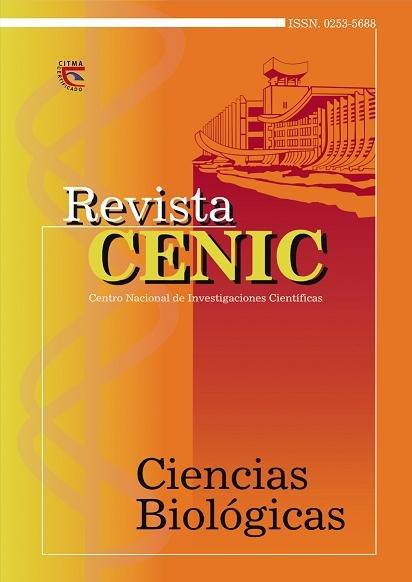Estudio del índice de desarrollo del Trichogramma fasciatum (Perkins) Hymenoptera, Trichogrammatidae criado en huevos de Corcyra cephalonica (Stainton) Lepidóptera, Galleriinae, en función del tiempo de refrigerado.
Abstract
A study of the birth rate of Trichogramma fasciatum (Perkins), bred with eggs of Corcyra cephalonica (Stainton), showed that this dimishes significantly only from the second week of refrigeration on, thus making it possible to keep Trichogramma in refrigeration for one week without a reduction in its developmental index. A negative correlation between the duration of refrigeration time and the number of Trichogramma born was demonstrated. The equation of retrogression was established permitting calculation of the birth rate according to the number of days in refrigeration. Study of the superparasitism of Trichogramma fasciatum (Perkins) on Corcyra cephalonica (Stainton) eggs showed that double and triple cases develop in an inverted ratio in relation to refrigeration time. The proportion of Trichogramma fasciatum corresponding to each sex was determined in a population of more than 2 400 specimens. Females represented 60 percent of the total, while the proportion of each sex was constant independently of the duration of refrigeration time.
Downloads

Downloads
Published
How to Cite
Issue
Section
License

This work is licensed under a Creative Commons Attribution-NonCommercial-ShareAlike 4.0 International License.
Los autores que publican en esta revista están de acuerdo con los siguientes términos:
Los autores conservan los derechos de autor y garantizan a la revista el derecho de ser la primera publicación del trabajo al igual que licenciado bajo una Creative Commons Atribución-NoComercial-CompartirIgual 4.0 Internacional que permite a otros compartir el trabajo con un reconocimiento de la autoría del trabajo y la publicación inicial en esta revista.
Los autores pueden establecer por separado acuerdos adicionales para la distribución no exclusiva de la versión de la obra publicada en la revista (por ejemplo, situarlo en un repositorio institucional o publicarlo en un libro), con un reconocimiento de su publicación inicial en esta revista.
Se permite y se anima a los autores a difundir sus trabajos electrónicamente (por ejemplo, en repositorios institucionales o en su propio sitio web) antes y durante el proceso de envío, ya que puede dar lugar a intercambios productivos, así como a una citación más temprana y mayor de los trabajos publicados (Véase The Effect of Open Access) (en inglés).














